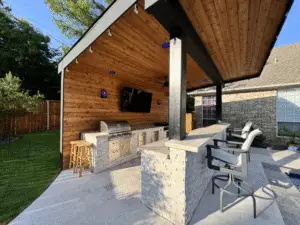Most people overlook the importance of designing a lighting system for their new commercial buildings. Proper lighting improves the building’s aesthetics and enhances its comfort, functionality, and energy efficiency. Civil engineers and lighting professionals should work together to achieve this.
Lighting design of commercial buildings requires a multifaceted approach and contribution from architectural and electrical professionals. As civil engineers handle the building’s overall design and construction tasks, electrical professionals handle lighting design to ensure they meet industry standards. For instance, most people don’t know they should have emergency lighting systems in their commercial buildings. You should consult emergency lighting Gold Coast experts for such. Below are a few things to consider when planning light needs for your commercial building.

1. Purpose and Function of the Building
You should begin by identifying the purpose and function of the space. Lighting requirements vary for different rooms or areas. For instance, office buildings with task-oriented activities require bright lights that won’t cause glare or discomfort. There should be a uniform light distribution throughout the space to ensure visual comfort and avoid shadows.
On the other hand, retail stores work best with ambient and accent lighting highlighting products on display. Lighting design in such spaces should be warm, attractive, and inviting to enhance visual appeal. Restaurants should also use lights that create a pleasing ambiance for diners.
2. Building Regulations and Standards
Unknown to most people, building codes and standards also apply to lighting for commercial buildings. These regulations are meant to promote safety, quality, and energy efficiency. That said, local building codes have guidelines that emphasize lighting intensity, lighting controls, emergency lighting, and energy consumption for commercial buildings.
You should familiarize yourself with these guidelines to avoid compliance issues. Building codes have specific illumination levels for corridors, parking lots, stairwells, and other areas. These regulations are meant to provide visibility and safety.
Building regulations are also designed to promote energy efficiency. Most states require new constructions to use energy-efficient lighting, such as LED fixtures and smart lighting options, to minimize consumption and environmental impact.
3. Natural Light Considerations
Ensuring your commercial building receives more natural light improves visual comfort, saves on energy, and connects the indoors to the outdoor environment. You should determine the quantity of natural light when evaluating lighting needs for your commercial building.
You should begin by evaluating the building’s orientation and window placement. Unlike before, modern architects and construction experts consider the sun’s path throughout the year when deciding where to place windows and skylights. This maximizes the amount of natural light entering the building.
Like Us on Facebook!
Fortunately, advancing technologies have made it possible to optimize natural light usage. For instance, installing daylight sensors and photoelectric controls dim or switch off lights when there’s enough natural light. You can also install automated shading systems to control the amount of daylight entering the building.
Subscribe Us on YouTube!
4. Future Expansion and Flexibility
Future expansion is also important when designing lighting systems for commercial buildings. There might be a need to expand or reconfigure the space over time as the business grows. As such, you should adopt a lighting design that can accommodate future changes without major disruptions.
You should opt for modular lighting systems for such flexibility. These systems have interchangeable components that can easily be expanded or reconfigured. Modular lighting allows users to adjust the functionality and layout of lighting systems without extensive infrastructural changes.
Lighting professionals should also install easily accessible conduits or raceways during construction. These pathways allow electricians to add new fixtures when necessary. These installations save time and costs of making future modifications to lighting systems.
5. Lighting Design Principles
Like other systems, adhering to lighting design principles helps create a functional and aesthetically pleasing space. Below are essential principles to consider:
- Uniformity: There should be uniform lighting levels for visual comfort and to avoid stark contrasts. Uneven lighting causes eye strain and fatigue.
- Glare control: glares are caused by excessive brightness and light contrast. The correct placement of light sources can eliminate glares.
- Light distribution: Distribution of light throughout the building also matters. Ambient lighting, accent, or focused lighting should be considered depending on the specific functionality of the space.
Working around these lighting design principles helps create an aesthetic environment that boosts comfort and productivity.
Endnote
Lighting needs for your new commercial building require that you consider several factors. The intended purpose of the space, local building codes and regulations, energy efficiency, lighting design principles, and future expansion are vital considerations. Generally, you should seek expert advice for better results.
















